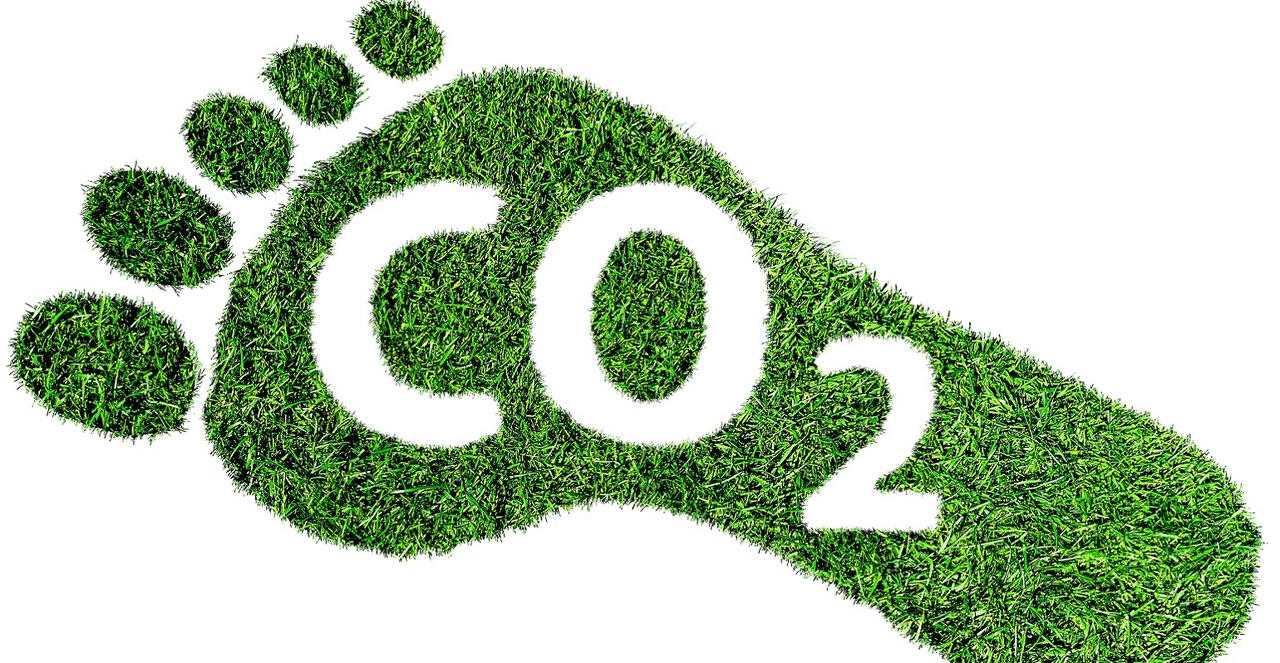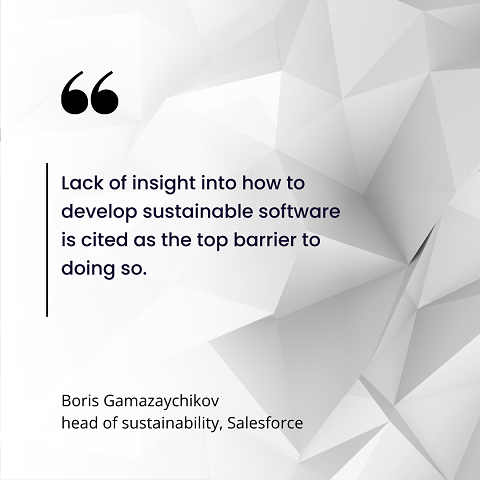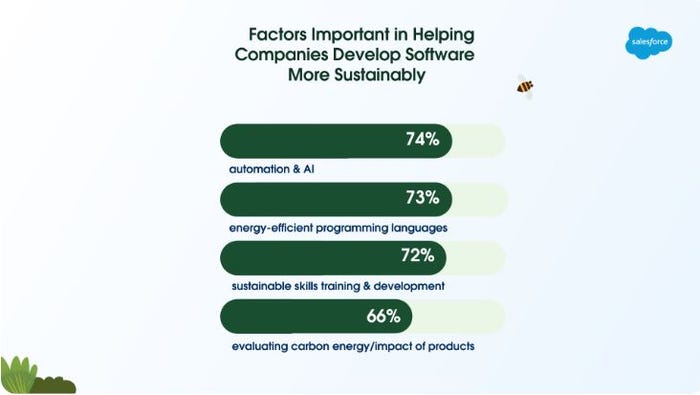Salesforce Green Code Initiative Seeks to Reduce Software's Carbon Footprint
The Green Code guide offers sustainability best practices for reducing energy usage during software development.
May 5, 2023

Software giant Salesforce launched an initiative called Green Code this week that is designed to help reduce carbon emissions resulting from the software development lifecycle.
The initiative Green Code offers sustainability best practices to help software designers and developers, as well as UX designers, system architects, and IT operations managers, move toward more sustainable software development practices.
The guide offers insights on how to reduce energy usage during development, building in operations efficiencies and deploying tactics such as integrating reusable APIs.
A Salesforce survey of more than 1,000 U.S., U.K., and Australia-based technologists indicates three-quarters of IT professionals want to develop software applications that do less harm to the environment.

Gamazaychikov-Salesforce
The information and communication technology sector is responsible for up to 3.9% of global emissions — almost as much as the airline and shipping industries, according to Boris Gamazaychikov, head of the emissions reduction program, ESG, and sustainability for Salesforce.
"These emissions are expected to rise as organizations increasingly rely on software to drive their operations and accelerate their digital transformation," he said.
Why Optimizing Code Is a Must
While sustainability efforts to date have been largely focused on hardware efficiency and electric grid decarbonization, optimizing the code that comprises these applications is a powerful leverage point that is essential to meeting commitments under the Paris Agreement, he added.
"Cost management alone won't achieve global sustainability goals," Gamazaychikov said.
"That's why we believe our Sustainability Guide for Salesforce Technology offers practical recommendations for designing apps and writing code so all technologists behind the keyboard — from UX designers and software developers to system architects and IT operations managers — can make critical contributions to protecting the planet."
As Salesforce's research revealed, while technologists want to act, they report little knowledge or training around sustainable development at their job.

Salesforce-GreenCode
"We believe this is a huge untapped opportunity in the industry," Gamazaychikov explained. "In fact, lack of insight into how to develop sustainable software is cited as the top barrier to doing so among this audience."
He pointed out that nearly half (45%) of technologists surveyed confess they don't know how to develop software applications that do less harm to the environment.
The process of developing, testing, and deploying software involves the use of energy-intensive hardware and infrastructure — data centers, servers, and transmission lines, according to Matthew Parin, Salesforce's product director for Hyperforce.
"To operate, these devices rely on electricity — which leads to carbon emissions when supplied by fossil fuels," he said. "As a result, software development is a significant contributor to the carbon footprint of the technology industry."
Parin added that optimizing the code that comprises these applications is a powerful leverage point that remains largely untapped.
"Salesforce is focusing on decarbonization efforts through innovations like Hyperforce, its public cloud infrastructure architecture built on 100% renewable energy, which will offer sustainability and functionality benefits to its customers," Parin said.
Promoting a Culture of Sustainability
Gamazaychikov noted that sustainable software development practices can help organizations achieve their ESG goals by reducing their carbon footprint and minimizing their impact on the planet.
"By adopting energy-efficient programming languages, optimizing cloud usage, and streamlining data storage, companies can lower their energy consumption and reduce waste — all of these can help promote a culture of sustainability," he said.
In addition to environmental benefits, sustainable software development can also have positive social and governance impacts by promoting transparency, accountability, and ethical practices in the organization's operations.
To track progress on its own sustainability, Salesforce created a metric called Carbon to Serve, which measures the emissions of its data centers relative to work performed by its applications.
Carbon to Serve measures the quantity of greenhouse gas emissions that it takes to deliver a Salesforce service or product, incorporating software efficiency, data center power usage effectiveness (PUE), and electric grid carbon content.
More efficient software (or hardware) produces higher outputs for every kilowatt hour of energy consumed (effectively reducing the carbon intensity).
Gamazaychikov said since establishing the metric in 2020, Salesforce has achieved a 26% reduction and aims to continue reducing emissions in the future.
"Being able to look at one specific number and analyze its variations — by geography or by product, for example — has been incredibly helpful as we work to decarbonize our IT infrastructure," he noted.
Read more about:
SalesforceAbout the Author
You May Also Like








.jpg?width=700&auto=webp&quality=80&disable=upscale)
